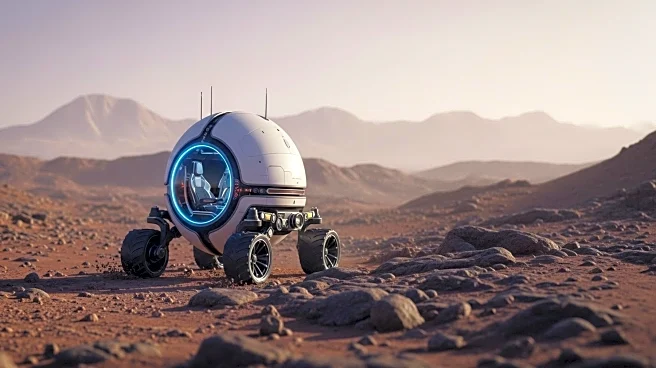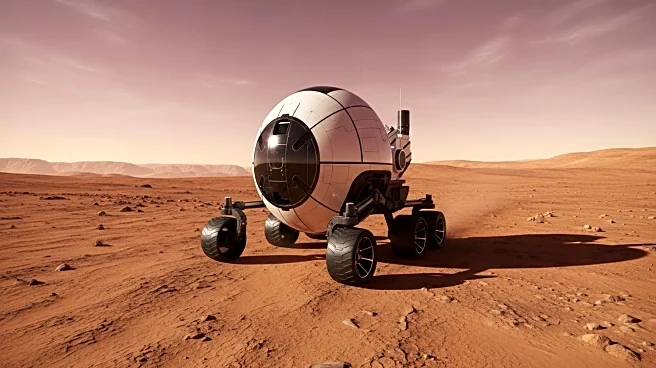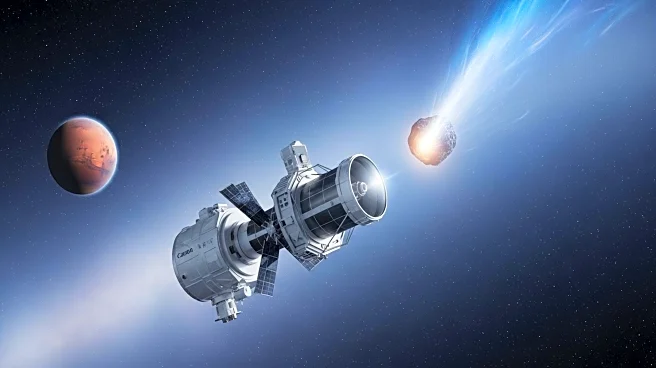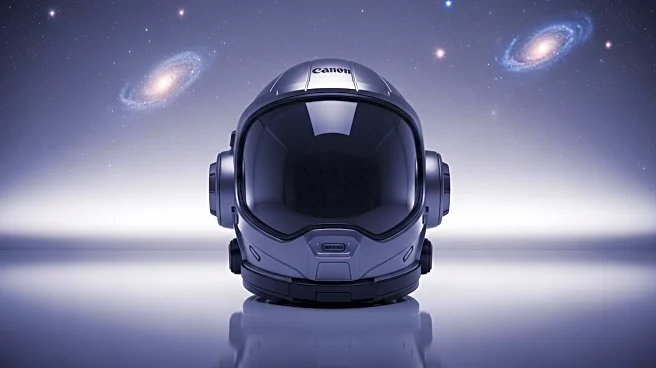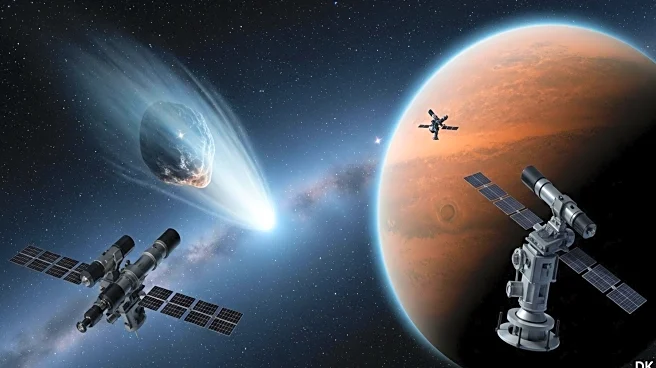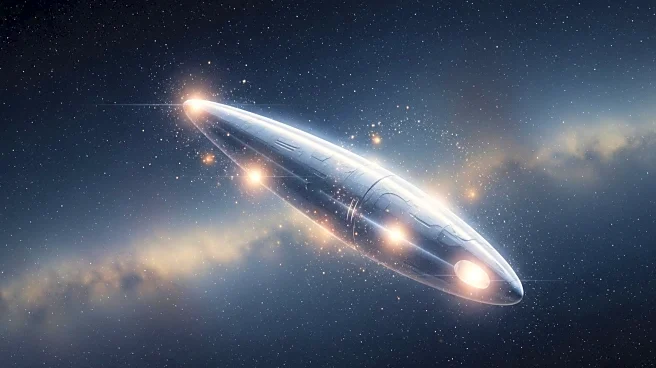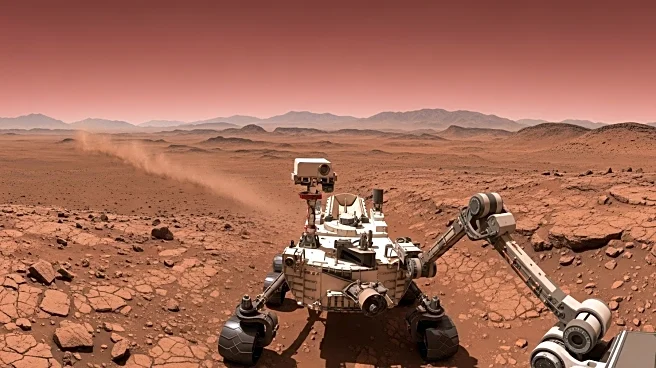What's Happening?
The Tumbleweed Mars rover, a spherical robot designed to roll across the Martian surface using wind power, has passed crucial field tests. Developed by Team Tumbleweed with support from the European Space Agency, the rover aims to provide a low-cost, large-scale exploration alternative to traditional rovers. Recent tests at Aarhus University's Planetary Environment Facility and a Netherlands quarry confirmed the rover's ability to traverse Mars-like terrain. The Tumbleweed rover features solar-powered sails and can be deployed in swarms, utilizing Mars' wind patterns for movement. The successful tests validate the rover's potential for mapping Martian habitability and creating a distributed sensor network.
Why It's Important?
The Tumbleweed rover represents a significant advancement in Martian exploration technology, offering a cost-effective solution for large-scale data collection. By leveraging wind power, the rover can cover extensive areas, providing insights into Mars' habitability and potential resources for future human missions. This innovative approach could influence the design of future exploration missions, emphasizing modular, swarm-based systems. The successful tests demonstrate the feasibility of deploying multiple rovers, potentially accelerating the pace of Martian research and expanding our understanding of the planet's environment.
What's Next?
Team Tumbleweed plans to refine the rover's design, integrating additional scientific instruments for comprehensive data collection. A field campaign in Chile's Atacama Desert is scheduled for November 2025 to further test the rover's capabilities. The ultimate goal is to deploy up to 90 Tumbleweed rovers on Mars by 2034, creating a long-term sensor network. Continued collaboration with international space agencies and research institutions will be crucial in advancing the project and ensuring its success.
Beyond the Headlines
The Tumbleweed rover's development highlights the potential for innovative exploration models that challenge traditional approaches. This project may inspire ethical discussions about the use of autonomous systems in space exploration and the implications of deploying large-scale sensor networks on other planets. Additionally, the rover's design reflects a shift towards sustainable exploration methods, utilizing natural forces like wind to minimize resource consumption.

